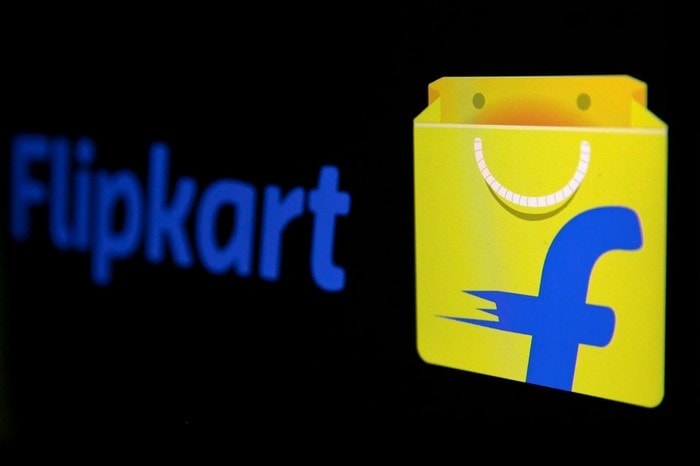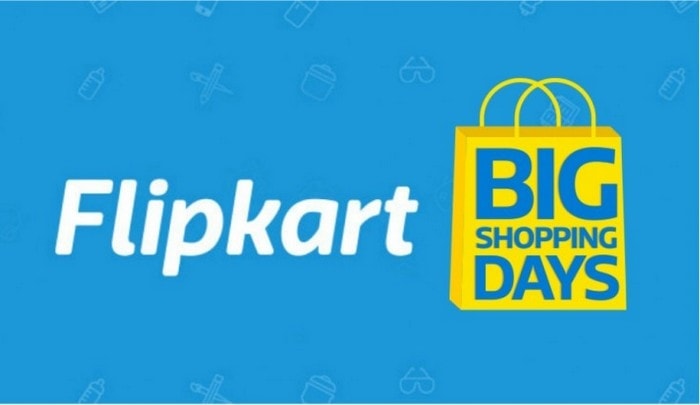Founded in the year 2007, Flipkart is an e-commerce giant that commands close to an impressive 40% of the market share in the Indian e-commerce industry. Founded by Sachin Bansal and Binny Bansal, the business model of Flipkart initially channelized revenues through book sales. Now, it comprises a wide range of product categories such as fashion, consumer electronics, lifestyle products, and so on.
In this post, we will be covering all the important details associated with Flipkart Business Model to understand how it functions and how it generates its revenues.
So, without any further ado, let us get started.
Table of Contents
Introduction to the Business Model of Flipkart
When there is a discussion about the sites that provide the best space for online selling in the world, Flipkart is one of the names that always come to the minds of people these days.
It is no doubt one of the best online selling platforms for the customers who are in need to get different products for themselves.
With the increase of online shopping in the world, sites like Flipkart have risen to the fame, and there is no doubt that Flipkart is trying to make the most out of the situation by creating amazing services for the people so that the company can earn more and more money.
Since Flipkart is one of the most popular sites that people use for online shopping these days, people need to know how the Flipkart business works in the first place and how it can make the amount of profit that it makes in the best way.
So, to do that, people need to get to know the business model of Flipkart. That is one of the main reasons why we are going to have a little discussion about it.
With the brief analysis of the Flipkart Business model and the background of the company, the people will be able to know the working procedure that the company uses and what future holds for the online shopping store for the people.
As I had said earlier, the company of Flipkart was founded by the Bansal duo, Binny and Sachin and that too in the year 2007.
Despite being a pretty new company in the world of e-commerce, it quickly rose to fame and became one of the biggest and the most amazing sites that people tend to use for an amazing online shopping experience.
The company was an e-commerce one, and it was registered in the area of Singapore.
The headquarters of the company was in Bangalore.
First of all, when the company started, it was a site where people could find some books online.
However, the times have certainly changed right now, and there are so many amazing things that the company has to offer to the customers these days. There are about 20 million products available on the site of Flipkart, and there are more than 70 different categories for the products as well.
As per the recent statistics, the company has around 30,000 employees.
By the end of March 2018, annual revenues generated by Flipkart were $ 3.8 billion (Rs. 26,925 Crore). As of now, the company’s total valuation is $22 Billion.
Let us now dig deep into the world of Flipkart to understand how it has become an e-commerce giant now-
Deciphering the Business Model of Flipkart – What has made Flipkart the Ecommerce Giant of India
There is no doubt about the fact that Flipkart is one of the most amazing and useful online shopping sites for people these days. However, to have a better understanding of the company, people need to know about the business model that Flipkart has in the first place.
Flipkart is a site that uses the B2C or Business to Consumer business model for the success of the company.
That means the business can provide the best of the support to the customers who want to have it in the first place. With the help of Flipkart, the sellers will be able to sell their collections in the best way.
If there are any product collections that they have, then they will be able to provide these products to the people. They can provide some discounts on the products as well to make sure that people are attracted to buy the products that they have in line for them.
The customers then visit the website of Flipkart and have a look at the products that are available there to decide whether they want to buy it or not. After the product has been ordered, it will be shipped and delivered to the address of the customers.
The sellers always have an agreed and fixed price that is offered on the website.
This fixed price is set after deducting the basic commission that Flipkart gets from the sellers for the services that are provided to them in the first place.
This is one of the best models that are used by the company of Flipkart, and there is absolutely no doubt that people will definitely be able to understand the process more if they know the business model of the Flipkart company in the best way.
Customers targeted by Flipkart Business Model
#1. Urban Buyers
Urban market is one of the most powerful audience bases of Flipkart, as it easily avails their products and services with personalized offers, discounts, and payment methods.
#2. Internet Users
Buyers who are online are also the key target of the business model of Flipkart. Via analytics, the company knows about the inclinations of these users and hence runs customized campaigns to generate conversions.
#3. Discount Seekers
All those buyers who prefer buying products at a discounted price are the prime target of Flipkart; the company comes with special offers, discounts, and coupons to help such buyers get the products at markdown cost.
#4. Customers looking for Ease of Shopping
In case you want the ease of shopping, you are also a target customer of Flipkart. Means those who want to fulfil all their requirements just by sitting at their homes, Flipkart serves them well even at the discounted prices.
#5. Buyers inclined towards specific products
People who do online searches for specific types of products are also the target base of Flipkart. Analytics help Flipkart to know about those searches and buyers. This way, the company showcases the ads to those customers on their browsers and devices to convert them as the buyer.
Now, as you are aware of the customers of Flipkart, the next key thing about the business model of Flipkart is its value propositions-
Value Propositions comprised by Business Model of Flipkart
- Product Launches related to Electronics, Home & Furniture, Baby & Kids, TVs & Appliances, Sports, Books & so on
- Personalized features such as Customer Account with Login & Signup, Selling services on Flipkart as a Seller, Advertising Opportunities, 24x 7 Customer Services, Software Application (Dual Interface), Flipkart Assured Badge
- Highly Convenient Services, Wide Product Range, Easy Delivery and Discount Offers
Channels of Business Model of Flipkart
Flipkart comprises a wide range of channels for effective channelization of its business model. Let us have a look at those here and now-
#1. Website
This includes official Flipkart site and Flipkart Plus along with Seller Program and Affiliate Programs that enable Flipkart to reach to its customers.
#2. Applications
Flipkart Online Shopping App and Flipkart Seller Hub are the parts of this channel.
#3. Social Media Platforms
Different social media platforms such as Facebook, Twitter, LinkedIn, Instagram, YouTube, Google+ are used as channels.
Key Elements of Flipkart Business Model
In the key elements, first come the partners that help in channelizing business model of Flipkart and they are-
- Authors and Publishers
- Different Subsidiaries such as Myntra, PhonePe, Jobong.com, LetsBuy, eBay.in and EKart
- Walmart that owns 81.3% of Flipkart
- Manufacturers, Sellers, and distributors of products
- Payment Partners
Next element that you need to understand here is the resources that help business model of Flipkart generate funds. Some of them are-
- Venture Capital Fund Partners such as Accel India, MIH (Naspers Group Sector), Tiger Global, ICONIQ Capital
- The immense flow of traffic around 100 million per day
- Payment Resources such as COD, Credit Card, Internet Banking Services, Payment Apps
Now, you should look upon the activities that the business model of Flipkart needs to channelize-
- Offering 24/7 customer service via phone, email, phone, and chat
- Ensuring a secure payment gateway
- Designing, developing and optimizing the Flipkart Platform
- Ensuring top-notch supply chain management
- The managing network of sellers
- Hiring, training and retaining the workforce
- Effective management of product catalogues
- Marketing, sales promotion activities and their role in deciding the pricing
- Offering different promotional offers and discounts as per different occasions
- Proper channelization of partnership with manufacturers and distributors
All these activities also play a key role in deciding the cost structure of Flipkart Business Model. Key parts of cost structure are-
- Warehouse management and deliver cost
- Technology and infrastructure support cost
- Workforce maintenance cost
- Advertising & Business Promotional Expenses
So, these were some of the key elements upon which the business model of Flipkart is based upon. Now, we will understand how Flipkart generates its revenues-
How Does Flipkart Make Money?
There are many different options that are provided to the customers through the help of which they will be able to buy and sell the products in the best way to the customers out there.
#1. Via Flipkart Website
There is a Flipkart website that they can use in order to list their products so that people can buy them. Also, there is a web application that is provided by the Flipkart Company as well.
The website and the web application are two of the most important aspects which play a great role in the generation of revenue for the company in the best way.
#2. Via Mobile Application & Social Media
Also, there is a mobile application which can be used by the customers for a fantastic experience of online shopping from a mobile phone.
Apart from that, Flipkart also uses the amazing social media websites for the promotion of the products, and there are affiliate-networks of the company as well such as websites, bloggers, coupon websites, review websites and so much more.
#3. Commission Structure
The commission that is charged by Flipkart is also one of the main reasons why the company is able to make so much money in the first place. The commission that is taken by the Flipkart Company from the users actually depends on the product and the sales-type that they tend to have all the time.
There are 5% to 20% of the taxes on the product and the discounts as well.
So, there is no doubt that the company is able to make a lot of money from product sales and the other forms of commission in the best way.
#4. Listing fee and Convenience Fee Options
Apart from that, the business model of Flipkart also derives revenue from some listing fee options and the convenience fee options provided, which is possibly another best way to generate additional revenues.
With the help of the amazing listing fees and convenience fees, the company is able to get some money from the sellers who want to list their products on the site and the application so that the people are able to see it when they are visiting the site on their online shopping times.
#5. Logistics and Shipping
There are some other sources of income as well in the business model of Flipkart, such as the logistics options. This is the amount that is collected from all the sellers for the shipping of their products in the best way.
The service is basically similar to the ones that are provided by the other online delivery companies in the best way. E-Kart is the online shipping service of Flipkart.
Not just that but digital media and ads are some of the most amazing ways with which the company of Flipkart can add some revenue to the profits in the best way. There are ads which are sold to the brands and the companies to get the profits.
Apart from that, the site of Myntra is another form of revenue generation for the company.
So, these are some of the details that one needs to know about the business model of Flipkart.
What do you think about the business model of Flipkart? Share your views in the comments below.
Liked this post? Check out the complete series on Business Models





